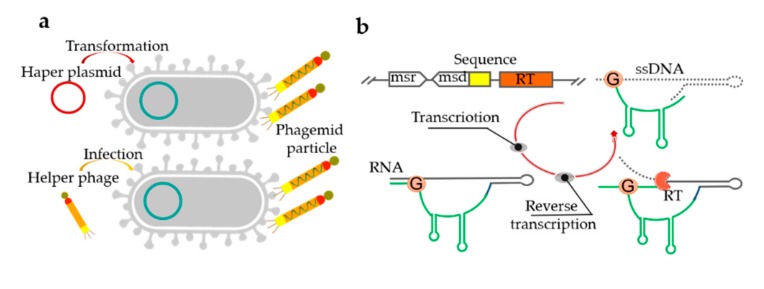Figure 4.
Bacteria-based ssDNA synthesis. (a) Schematic of the two approaches to phagemid-based ssDNA production. The phagemid-carrying E. coli cells are infected with the “helper phage” or transformed with a “helper plasmid”, the ssDNA can be generated. (b) The processes of ssDNA production by bacterial reverse transcriptases (RTs). In transcription step, the msr-msd RNA folds into a secondary structure; In reverse transcription step, the RT recognizes this secondary structure and uses a conserved guanosine residue as a priming site; Finally, a hybrid RNA-ssDNA molecule is produced.

